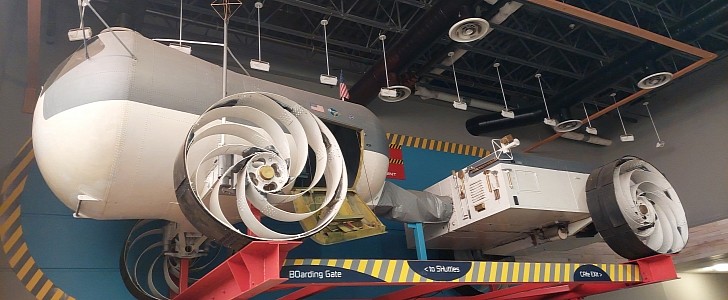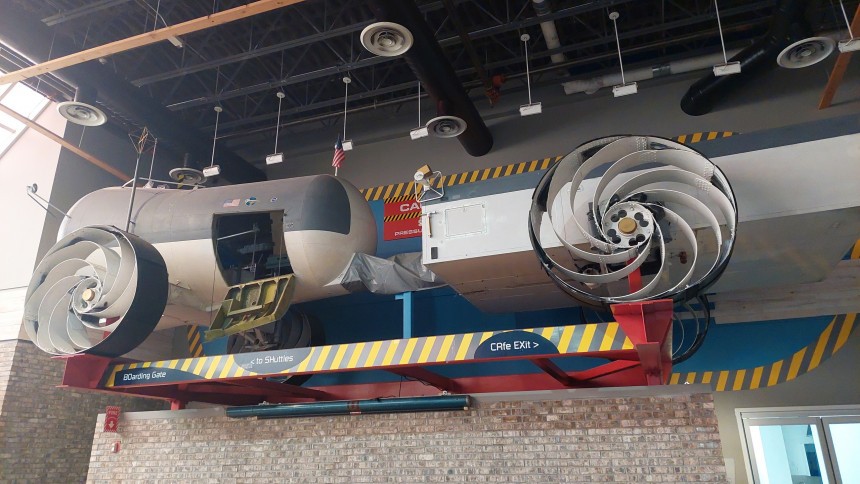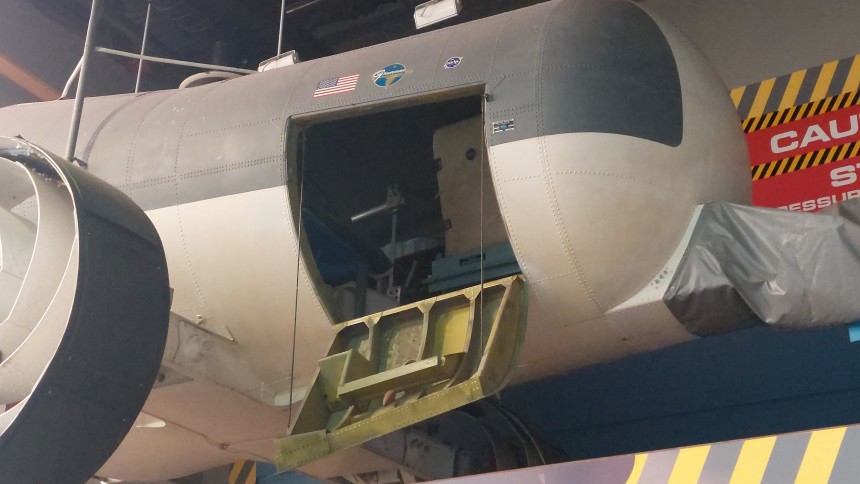It's a real bummer when a concept car that looks promising doesn't go into production. But when a purpose-built spacecraft meant to traverse another heavenly body doesn't make it, it's a tragedy. Why? Because it no doubt took some serious money to get off the drawing board.
In the case of the Grumman Molab, the first full-sized manned roving lunar laboratory design commissioned by NASA, it couldn't have been an absolute monetary loss, as only one full-sized mockup was ever constructed. But that's unusual for the space program, as when programs go bust, it's often catastrophic for the company in charge. Let's take a look back at the story behind Grumman's long-lost moon rover.
Today, the only Molab mockup stands guard over the Red Planet Café, the professionally catered lunch cafeteria inside the Cradle of Aviation Museum in Garden City, New York. This Mars-themed cafe serves all kinds of exotic Martian cuisine like cheeseburgers, pizza, hot dogs, chicken strips, and that most prized and delectable of Martian delicacies, curly fries. All the while, museum patrons marvel at the strange-looking moon rover mockup sitting above their heads.
But not once will most of them even consider in an alternate timeline that this thing would have been roving around the Moon's surface conducting groundbreaking experiments in extracting helium-3 from lunar soil to make it into a killer rocket fuel. As opposed to watching endless children and their doting parents bury their faces in a double cheeseburger with extra ketchup or a delightfully greasy slice of pizza. Safe to say, the Apollo program was a lot more remarkable in this alternate timeline.
But for how incredible a potential Molab (Mobile Laboratory) on the Moon may have been, there appears to be little to no information on the internet regarding the more intricate details of its history had one not literally been sitting right in front of us during our trip to the Cradle of Aviation. Even if we wanted to stoop to reading the Wikipedia article and call it a day, the Grumman Molab doesn't even have one. That's how obscure it is.
It reads at the bottom of the page, "Molab was conceived while NASA believed that there would be two Saturn V launch vehicles to get men and machines to the Moon. This particular vehicle was designed to accommodate two astronauts in a pressurized environment with full accommodations and would permit extended traverses on the Moon lasting days at a time."
The book also mentions how the term Molab was applied to a number of different rover vehicle concepts in the early to mid-1960s, including a design by General Dynamics, Bendix, Boeing, and even General Motors and Chrysler. But as for Grumman's design, the one that was ultimately chosen by NASA, it's hard not to get the idea it was designed a bit like a Lunar pickup truck. The main pressurized cabin housed the crew's two-person quarters alongside ample space for scientific experiments.
The rear of the vehicle, attached to the front cab via an umbilical type connector, housed all the equipment two astronauts would need for a hardcore Overlanding-style trip across the Lunar surface to where points of scientific interest could be found. In short, the Molab was to launch from a separate Saturn V launch vehicle from that which carried its crew.
With an all-electric drivetrain and a supposed range of 250 miles, it would take almost 70 years before a road-going Earth EV could match the purported target range set for the Grumman Molab. Although something tells us 1/6th Earth's gravity does wonders for quelling battery range anxiety.
But it was all for not. As budgetary constraints and a desire to simplify the program as much as possible, Grumman instead focused on allowing the Grumman LEM to be able to carry a rover-type vehicle by itself while attached to a single Saturn V launch vehicle under the extended J-class mission initiative.
Thus, Grumman's only Molab concept was donated to the Cradle of Aviation, stricken here on Earth while it gazes at endless lines of chicken fingers, sandwiches, burgers, etc., and all the endless people lined up to chow down. Not exactly Moon food by any stretch, but still undeniably tasty.















